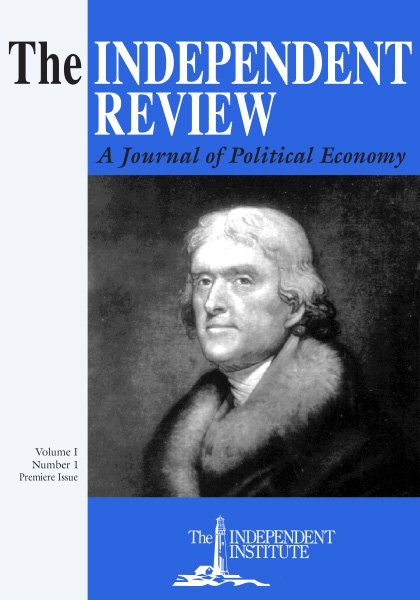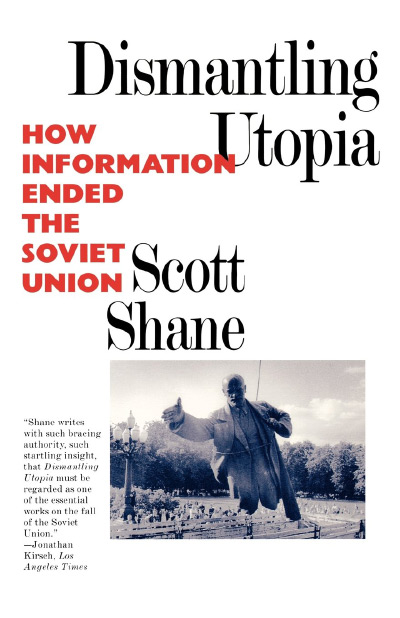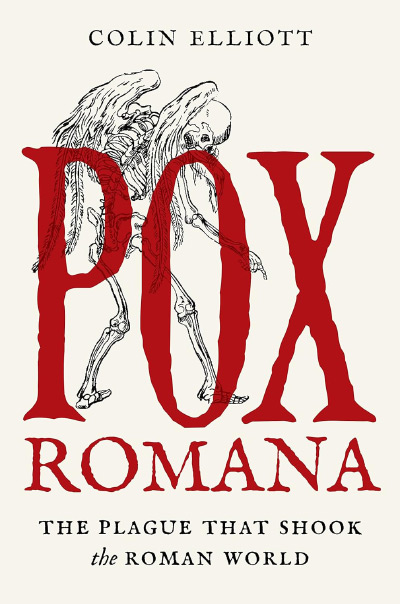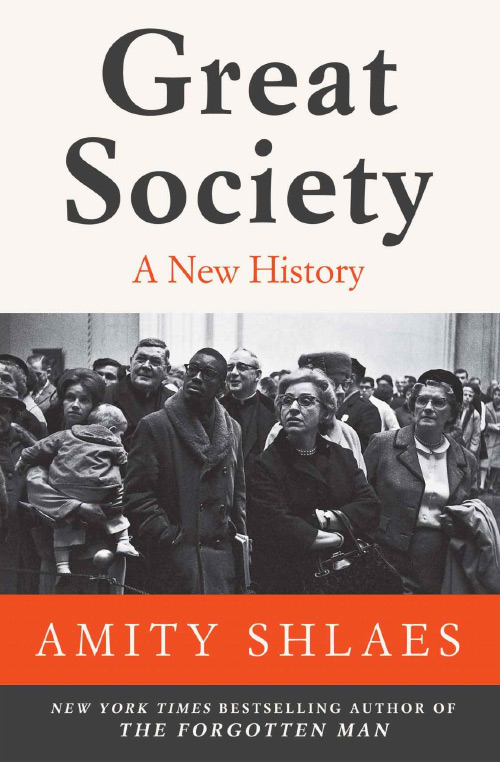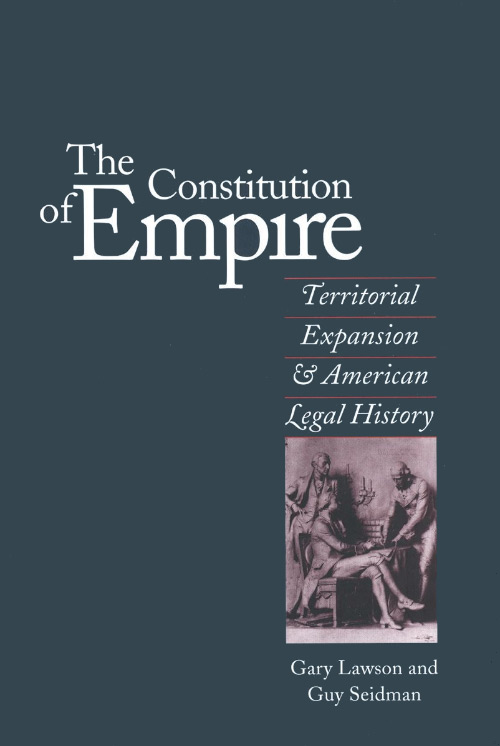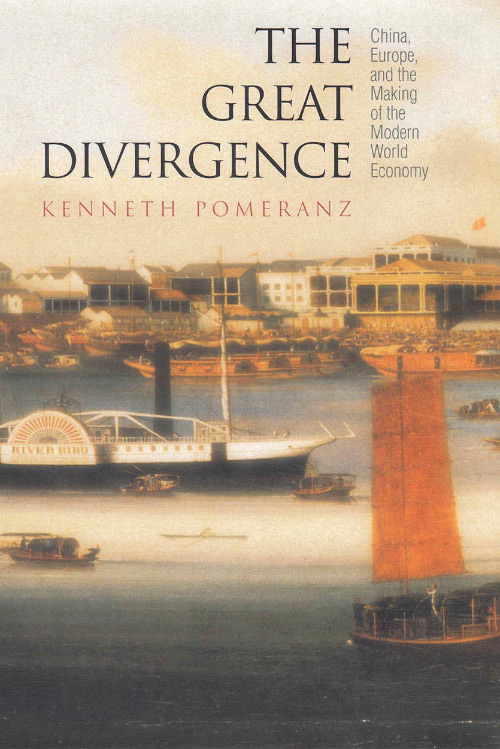Scott Shane’s book deals with the major event of the late twentieth century: the demise of Soviet socialism. Having been a correspondent for the Baltimore Sun in Moscow during Mikhail Gorbachev’s perestroika, Shane has witnessed firsthand the spectacular failure of the numerous attempts by Gorbachev’s government to “reform” and “perfect” the socialist system and how those attempts composed the final stage of Soviet socialism.
Shane rightly regards the dismantling of socialism as an unintended consequence of perestroika. Unlike most American journalists, who created a cult of Gorbachev’s personality in the West, Shane believes that the last Soviet dictator “set out to renew socialism, not to destroy it, to make the empire stronger, not to break it apart” (p. 5). To underscore the futility of Gorbachev’s efforts, Shane quotes the witticism of the Russian historian Leonid Batkin, who “once compared Gorbachev with an apocryphal old man who was said to have pulled the chain to flush his toilet at the precise moment of the Tashkent earthquake. ‘If I’d known all that was going to happen,’ the man is supposed to have said, emerging from the rubble and surveying the devastation, ‘I never would have pulled the chain in the first place’” (p. 5).
Shane views the breakup of the Soviet Union as the logical outcome of the absence of the market, the essential means by which complex societies transmit information. This critical lack became the major impediment to growth and development, especially in our age of rapid advance in information technology.
He further characterizes socialism as a utopia based on terror: “This economy without markets and their constant flow of information, this strange species so fraught with paradox, did not spring magically into existence after 1917. It was built, on orders from the state, with brutal force and at great cost in human lives” (p. 86). The only way to make this utopia work, as Lenin and his successors realized, was to resort to terror. Fear was implanted into people’s minds and replaced normal economic incentives. Not by coincidence did the Soviet economy grow fastest during the period of Stalinist purges and mass terror. “This, then,” writes Shane,
was the Brobdingnagian economy Stalin had built on the bones of kulaks and prisoners, an economy subject to state command and control. It was an economy designed not to generate the stream of information necessary for self-regulation but to respond to orders from the regime. It was an economy planned for total control. But especially in the absence of terror, control cannot be total. (p. 90)
Shane is right: when the ailing regime lost its repressive impetus under Gorbachev’s perestroika, the “socialist economic mechanism” fell like a house of cards.
A leading attribute of Soviet socialism was state monopoly of information. “The secrecy and censorship, banning and jamming that fenced the Soviet citizenry off from the truth about their own history and the outside world had long been viewed in the Kremlin as a necessary bulwark against subversion” (p. 44). From the start, the Soviet regime rested on a system of belief, not knowledge, a mythology that citizens learned from earliest childhood and that suffused every aspect of life. Shane quotes a grade-school textbook that I remember well from my youth in Russia: “We see how day by day, hour by hour, with enthusiasm, joy and pride the Soviet people are building the radiant edifice of Communism. You, kids, also will build Communist society, and not only build but work under Communism” (p. 55).
In addition to their thrust to impose complete control over people’s minds, the central planners shoved toward total control of production and distribution. All traces of competition were eliminated after the early 1930s with the formation of the system of industrial ministries solely responsible for the production of certain groups of commodities. As a result the market-price system necessary for an efficient economy ceased to exist. It was replaced by bureaucratic “cost accounting” calculations to set prices that were not even theoretically supposed to reflect supply and demand. Efficient allocation of resources became impossible because of the lack of market pricesinformation that converges in markets as a composite statement of all existing conceptions, beliefs, and valuations concerning the usefulness of scarce resources for all the competing ends for which they could serve as means.
The already-distorted price mechanism was further undermined by the economic “reforms” of the 1960s, which introduced huge subsidies on the one hand and heavy indirect “turnover” taxes incorporated into prices on the other. The absurdity of the system reached grotesque proportions when, during Nikita Khrushchev’s economic reforms, the concept of “profit” was introduced into socialist economizing. Here, however, profit became a planned category, calculated as a percentage of cost. This “high cost/high profit” approach was one of the catalysts for the collapse of the system during the 1980s. Shane writes that the entire attempt to plan the Soviet economy “was as hopeless as if a human being tried consciously to control all the muscles directing his breathing, blood circulation, and digestion, deciding just when to contract his right ventricle and how much insulin should be released by his pancreas” (p. 83).
Following the well-known arguments of F. A. Hayek, Shane argues that central planning collapsed because of its “pretense of knowledge,” that is, its incompatibility with the actual decentralization and specialization of knowledge in society. Answering those who still believe, as Oskar Lange did, that economic calculation can be accomplished successfully by employing computer technology, Shane states, “The microchip is no panacea; utopia, it is worth remembering, literally means ‘no place’” (p. 282).
In this connection, one must recognize the interdependence of political and economic freedom, market prices, decentralization, profit maximization, incentives, and competition. Of course, decentralized entrepreneurs need to face appropriate incentives. So long as industries were monopolized, they did not. The only challengers of the state monopolies were the black marketeers who, Shane believes,
were really economic dissidents. By exercising economic freedom, they were challenging thestate’s monopoly on the economy, just as political dissidents who asserted freedom of speech or of the press challenged the state monopoly on ideology. And if they were caught by the state, the moonlighters could be sent to a labor camp just as political dissidents were. (p. 92)
By their nature, bureaucracies stand outside the market process and the price system; they are denied the tools of economic calculation and therefore their economic decisions must be arbitrary. In contrast to the oft-encountered Western theory that private market power leads to the exploitation of one’s market position, it is precisely state-granted monopoly that leads to exploitation and rent-seeking. Shane quotes Vasily Grossman, a great Russian writer practically unknown in the West, who in his 1963 essay-novel Forever Flowing depicts a prisoner returning from the dreadful Gulag. (Gulag is the Russian acronym for the Chief Administration of Corrective Labor Camps, a system of concentration and extermination camps in the Soviet Union established in 1918 after the Bolshevik Revolution.) This prisoner comes to understand the “parallel restraints on mental and physical labor.” “I used to think freedom was freedom of speech, freedom of the press, freedom of conscience. But freedom is the whole life of everyone,” he declares.
Here is what it amounts to: you have to have a right to sow what you wish to, to make shoes or coats, to bake into bread the flour ground from the grain you have sown, and to sell it or not to sell it as you wish; for the lathe operator, the steelworker, and the artist it’s a matter of being able to live as you wish and not as they order you to. And in our country there is no freedomnot for those who write books nor for those who sow grain nor for those who make shoes. (p. 92; not unlike laments heard in the United States in the 1990s!)
The decades-long effort to eliminate markets resulted in the destruction of the work ethic, mass misallocation of resources by centralized investment decisions, demolition of the base for private capital accumulation, distorted means of economic calculation, and technology so obsolete that many industrial enterprises possess capital of zero or negative value. Most Russian heavy industrial enterprises were built during Stalin’s industrialization program in the 1930s and have not been significantly modernized. After 1917 the central planners disallowed the closure of enterprises, even the most inefficient. The very term efficiency became meaningless because of the rejection of the concept of opportunity cost by the official “political economy of socialism.” Thus, a huge part of Russia’s industrial capital looks, and is, no more productive than that in an industrial-history museum.
The crisis of socialized agriculture goes back to the 1920s and 1930s, when “Stalin had supplanted the myriad individual decisions that make up a market with a rigid hierarchy and top-down control, effectively locking the peasantry into a new form of slavery” (p. 87). More than 5 million of the most productive peasant households were condemned as ”‘kulaks’ literally ‘fists’whom Stalin vowed to annihilate because of their resistance to the new collective farms” (p. 88). Agriculture still has not recovered from the collectivization and blanket nationalization of property that turned owners into prison laborers. At the beginning of the century Russia exported wheat, rye, barley, and oats10.5 million tons of grain annually during the years from 1909 to 1913. Today, Russia is the world’s largest importer of grain. Socialism devastated rural culture, producing extreme urban-rural disparities, forced labor, and severe shortages of housing, schools, hospitals, roads, and other elements of social infrastructure in the countryside. According to recent estimates, more than 40 percent of hospitals in rural Russia do not have running water or modern sewage-disposal systems.
The suppression of economic freedom and individual initiative has led to widespread apathy and the inability of the public to make independent decisions as well as to a complete lack of individual responsibility. Economic decisions were purely political in character. The assumed orientation of these decisions and corresponding propaganda on “the communist civilization of tomorrow,” “world victory of socialism,” “complete satisfaction of societal needs,” “scientific and technological revolution,” and other abstract goals undermined entrepreneurship and initiative and made people helpless in dealing with the Leviathan state. All economic activity in the Soviet Union was subordinated to the fulfillment of communist political ideals “at any price.”
The collapse of socialism came as a surprise only to the fellow travelers of communism in the West and to some “blackboard” Sovietologists who uncritically read too much Kremlin propagandadisregarded as nonsense by the majority of Soviets themselves. “The characteristic feature of this age of destructive wars and social disintegration is the revolt against economics,” said Ludwig von Mises (Human Action, 3d rev. ed. Chicago: Regnery, 1966, p. 9). The revolt inevitably failed. Eventually even many of the advocates of socialism in the West admitted that the economic collapse of the Soviet Union resulted not from the West’s military superiority but from the Soviet government’s rejection of economic reasoning.
No economic analyst can calculate the opportunity cost of the socialist experiment in Russia, but the human toll is estimated by Russian historian Roy Medvedev at 41 million people. They perished in a dreadful Gulag during Stalin’s collectivization and in purges, campaigns against “unearned” incomes, and other devilish experiments. Still, “the only lesson of history is that it does not teach us anything,” says a popular Russian aphorism. Nobel laureate Gary Becker recently observed that “despite the recent collapse of socialism and communism in Soviet Russia and Eastern Europe, socialism is still alive and growing” (President’s Address, Mont Pelerin Society Regional Meeting, Big Sky, Montana, 1991). It remains a mortal danger to economic freedom and the quality of life for us and generations to come. Dismantling Utopia is a testimony to how rejection of economic reasoning destroyed a country that could have been among the world’s richest. Shane quotes nineteenth-century Russian philosopher and writer Pyotr Chaadayev’s prophetic augury: “We are exceptional people; we are among those nations that, as it were, are not members of mankind but exist only to give the world some terrible lesson.”
| Other Independent Review articles by Yuri N. Maltsev | ||
| Summer 2022 | Revolutionary Monsters: Five Men Who Turned Liberation into Tyranny | |
| Fall 2017 | Mass Murder and Public Slavery: The Soviet Experience | |
| Summer 2008 | Resisting the State: Reform and Retrenchment in Post-Soviet Russia | |
| [View All (4)] | ||

